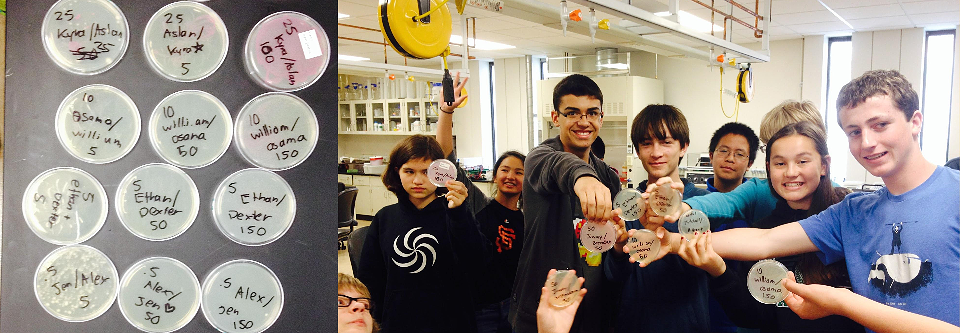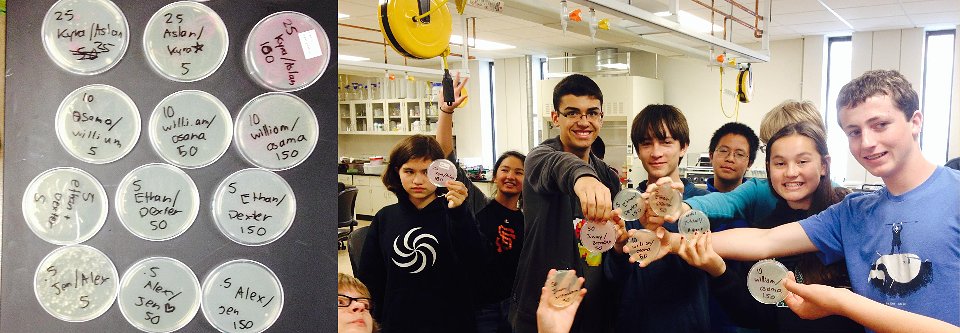Team:Shasta Summit CA
From 2014hs.igem.org
(→Safety) |
(→Human Practices) |
||
| Line 79: | Line 79: | ||
===Human Practices=== | ===Human Practices=== | ||
| - | |||
| - | + | This CO sensor would be useful in many ways: | |
| + | 1. It would not require constant power, this means that you could use it in locations with easy access to power, such as third world countries, underground places/mines, portable/handheld, etc. | ||
| + | 2.It would be small and compact, allowing for easy transportation, meaning it could be carried by people everywhere, providing constant protection. | ||
| + | 3. It would create a smell, this means that deaf and blind people would be able to be aware of it, as well as allo | ||
===Fun!=== | ===Fun!=== | ||
Revision as of 23:00, 21 April 2014
[http://aslanbnguyen.wix.com/igem The Main Site]
|
'This year we will be focusing on creating a carbon monoxide sensor, a bacteria that in the presence of CO activates RFP (Red florescent protein) to make the bacteria glow, and let of a distinct smell. This way you do not need to be able to see the sensor to detect CO. | |
| Team Shasta_Summit_CA |
| [http://aslanbnguyen.wix.com/igem Official Team Profile] |
|---|
Contents |
Team
Professors:
Chris Vulpe of UC Berkeley
Nick Kapp of Skyline College
Students:
Albert Liu
Alex Liu
Aslan Nguyen
Brendan Thompson
Dexter Hamilton
Ethan Vulpe
Jen Co
Jimmy Lujan
Kyra Newcomb
Mitchell Wong
Osama Hanhan
Sydney Huddleston
William McEachen
[http://aslanbnguyen.wix.com/igem#!team/c46c Show More!]
Project
Our iGEM project is to modify bacteria by creating plasmids in order to create a bacteria that detects carbon monoxide. Once they have detected the carbon monoxide, they will release red florescent protein (RFP), which makes the bacteria red, and easy to notice.
[http://aslanbnguyen.wix.com/igem#!projects/cm8a Read up here!]
Notebook
Every Tuesday we meet to make progress on our iGEM project. On Thursdays we go to the lab at skyline collage and do laboratory work, at the end of our meetings we discuss the progress we have made, and research new information for our next meeting!
Results/Conclusions
Over the course of the year we have practiced with bacteria by making transformations and competent cells.
Safety
In the lab we are always supervised by Chris Vulpe (Professor at UC Berkeley), and Nicholas Kapp (Professor at Skyline College).
Although we rarely have lab coats.
Attributions
Who worked on what?
Human Practices
This CO sensor would be useful in many ways: 1. It would not require constant power, this means that you could use it in locations with easy access to power, such as third world countries, underground places/mines, portable/handheld, etc. 2.It would be small and compact, allowing for easy transportation, meaning it could be carried by people everywhere, providing constant protection. 3. It would create a smell, this means that deaf and blind people would be able to be aware of it, as well as allo
Fun!
To have fun we poked fun at Will. To be frank his jokes are pretty bad. Who drops a terminator joke in the middle of a brainstorming session? Will McEachen of course, it wasn't even that good in the first place. Aslan Nguyen on the other hand is the genius of the group and is able to crack amazing jokes!
<forum_subtle />
 "
"

